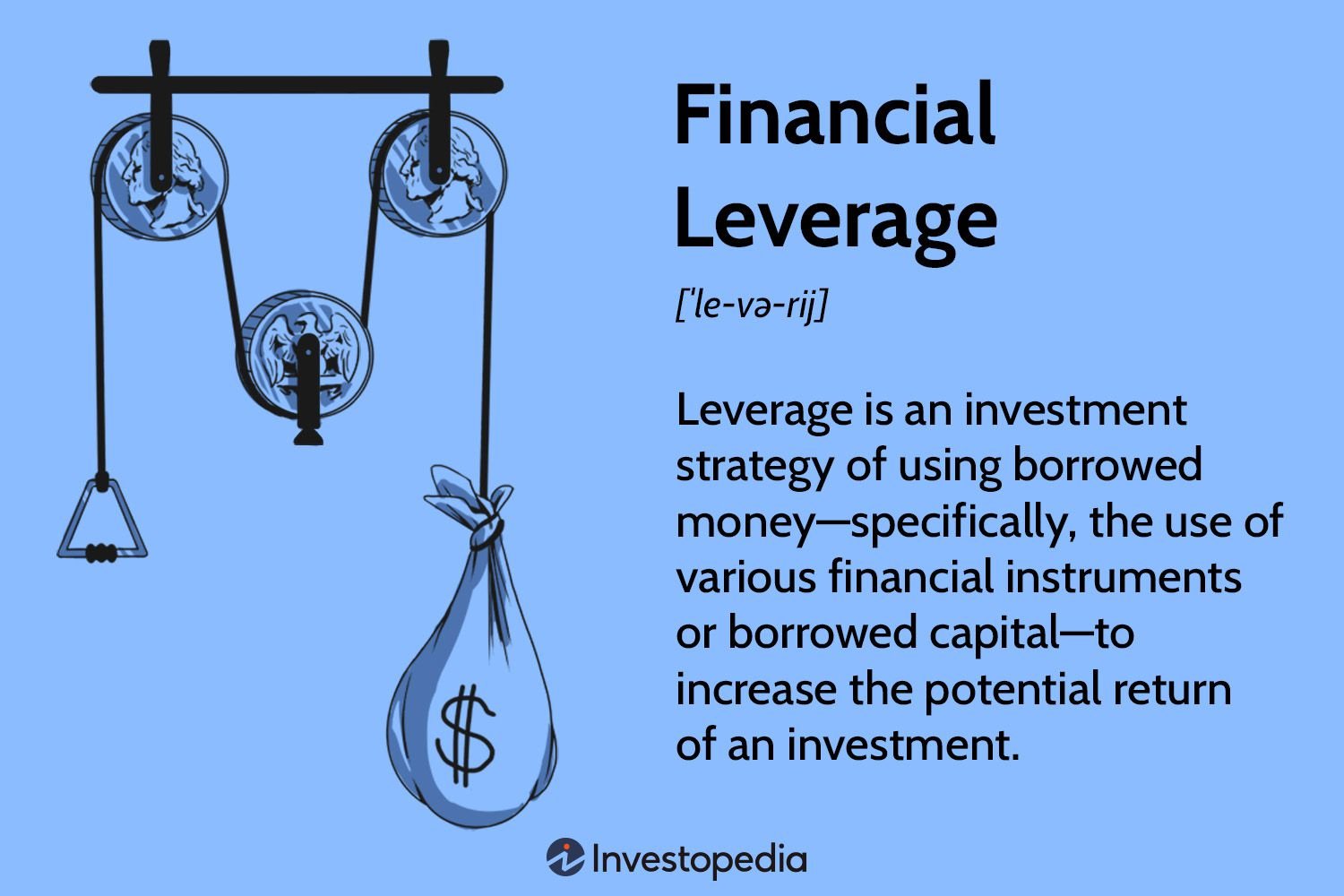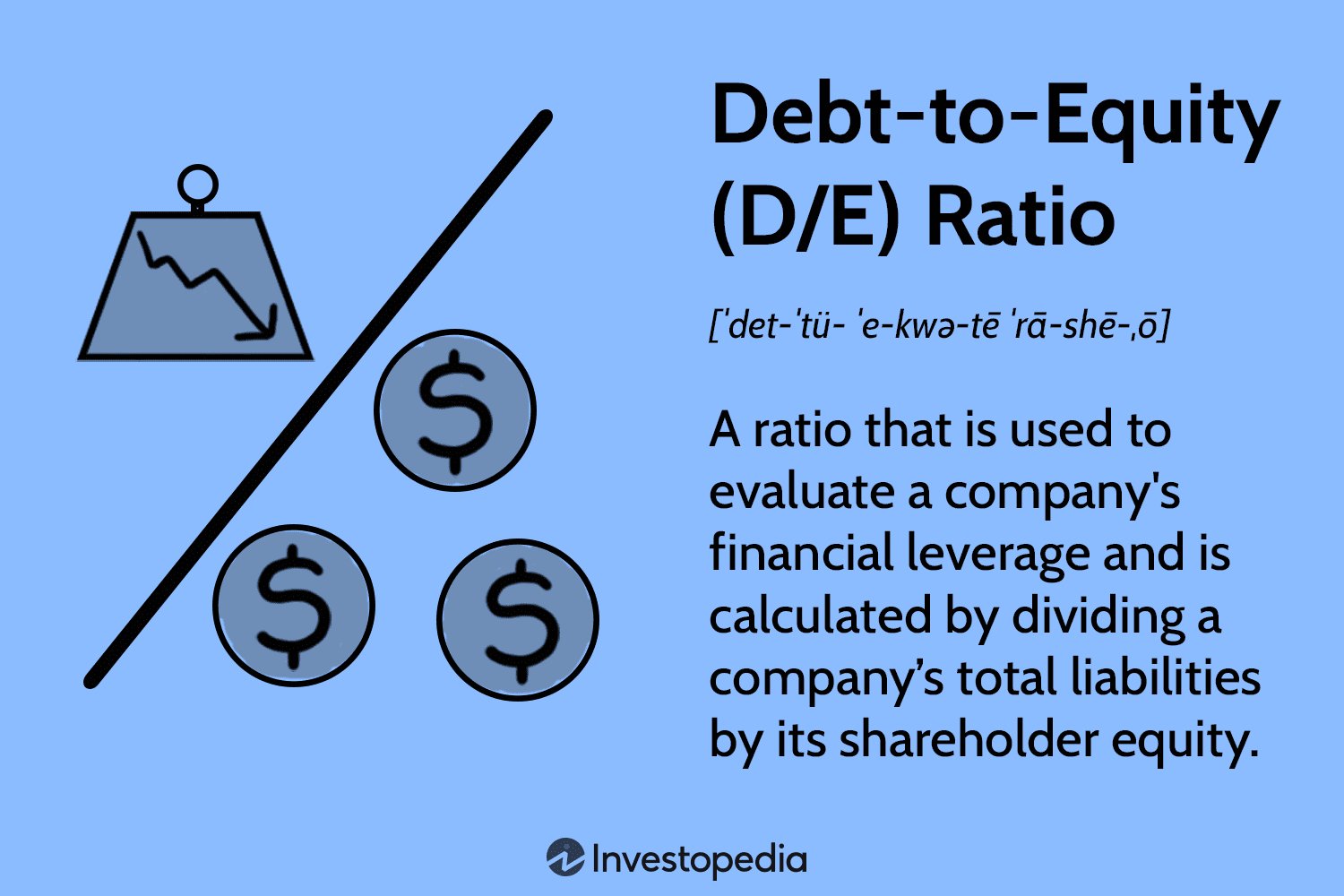Financial leverage is a powerful tool in the world of investing, but it comes with its own set of risks. So, what is financial leverage and its risks? Simply put, financial leverage refers to borrowing money to amplify the potential returns of an investment. It allows investors to control larger positions with a smaller amount of capital. However, this increased potential for profit also comes with increased risk. Understanding the concept of financial leverage and its associated risks is crucial for anyone looking to navigate the complex world of investing efficiently and effectively. In this article, we will explore the concept of financial leverage, delve into its risks, and provide insights to help you make informed investment decisions.
What is Financial Leverage and its Risks
Financial leverage refers to the use of borrowed funds to increase the potential return on investment. It allows individuals or businesses to amplify their purchasing power, invest in larger projects, and potentially generate higher profits. However, like any financial strategy, there are risks associated with financial leverage that should be carefully considered.
The Basics of Financial Leverage
Financial leverage involves using borrowed funds, such as loans or lines of credit, to make investments or expand business operations. By utilizing leverage, individuals and businesses can access additional capital that they may not have otherwise, creating opportunities for growth and potentially greater returns.
The concept of financial leverage is based on the principle of using other people’s money to maximize profits. Here’s how it works:
1. Borrowing Funds: The first step in leveraging is to borrow funds from external sources, such as banks or financial institutions. These borrowed funds can be used for various purposes, including investing in stocks, real estate, or expanding a business.
2. Investing: Once the funds are borrowed, they are used to make investments or finance projects. The goal is to generate enough returns on the investment to cover the cost of borrowing and still make a profit.
3. Magnifying Returns: If the investments perform well, the returns will be higher than the cost of borrowing. This amplifies the gains and allows individuals or businesses to make more money than if they had used only their own capital.
The Benefits of Financial Leverage
Financial leverage offers several potential benefits for individuals and businesses. These advantages make it an attractive strategy for those looking to grow their wealth or expand their operations:
1. Increased Purchasing Power: Leverage enables individuals or businesses to access larger amounts of capital than they currently possess. This increases their purchasing power and allows them to take advantage of opportunities that may not have been feasible without borrowing.
2. Potential for Higher Returns: By amplifying their investments, leverage can potentially generate higher returns. If the investments perform well, individuals or businesses can make a profit even after accounting for the cost of borrowing.
3. Diversification: With leverage, individuals or businesses can diversify their investment portfolios by spreading their borrowed funds across multiple assets. This helps reduce the risk of relying solely on one investment and provides a chance for higher overall returns.
4. Business Expansion: For businesses, leveraging can fund expansions, acquisitions, or other growth strategies. It provides the necessary capital to implement growth initiatives without relying solely on internal resources.
The Risks of Financial Leverage
While financial leverage offers benefits, it also carries inherent risks that individuals and businesses must consider before implementing this strategy. It’s essential to understand these risks to make informed decisions:
1. Increased Risk of Losses: Just as leverage can amplify gains, it can also magnify losses. If investments perform poorly, the losses will be significantly higher due to the borrowed funds. Individuals or businesses must be prepared for the possibility of losing more than they initially invested.
2. Interest Costs: Borrowing funds comes with interest costs. The interest payments can eat into the profits generated from the investments, potentially reducing the overall return on investment. Additionally, if interest rates rise, the cost of borrowing increases, further impacting profitability.
3. Financial Instability: Relying heavily on borrowed funds can put individuals or businesses at risk of financial instability. If the investments underperform or if there’s a sudden downturn in the market, it can become difficult to meet repayment obligations, leading to financial distress.
4. Limited Flexibility: Using leverage can restrict financial flexibility. Monthly interest payments and debt obligations can limit the ability to allocate capital for other purposes, such as reinvesting in the business or taking advantage of new opportunities.
5. Leverage Covenants: When borrowing funds, lenders often impose certain restrictions and covenants to protect their interests. These covenants may limit the borrower’s ability to make certain financial decisions or take on additional debt. Failure to comply with these covenants may result in penalties or a default on the loan.
Managing the Risks of Financial Leverage
While financial leverage carries risks, they can be managed by adopting sound financial practices and strategies. Here are some steps to consider:
1. Understand Risk Tolerance: Assess your risk tolerance before utilizing leverage. Consider your financial situation, investment goals, and ability to handle potential losses. It’s important to be comfortable with the risks associated with leverage.
2. Diversify Investments: Spread borrowed funds across different investment assets to reduce the risk of relying on a single investment. Diversification helps mitigate the impact of poor performance in one area.
3. Perform Due Diligence: Before borrowing funds, thoroughly research potential investments. Understand the market conditions, analyze financial projections, and evaluate potential risks. Making informed decisions can minimize the chances of unexpected losses.
4. Maintain Adequate Liquidity: Preserve sufficient cash or liquid assets to meet potential financial obligations. Having reserves can help manage unexpected challenges or repay debt during challenging times.
5. Regularly Monitor and Adjust: Continuously monitor the performance of leveraged investments and reassess your strategy. Be prepared to make adjustments if market conditions change or if investments underperform.
In conclusion, financial leverage can be a powerful tool for individuals and businesses seeking to grow their wealth or expand their operations. However, it is crucial to comprehend the risks associated with leveraging and adopt appropriate risk management strategies. By understanding the basics of financial leverage, assessing risk tolerance, and implementing sound financial practices, individuals and businesses can make informed decisions that align with their goals and mitigate potential risks.
Financial leverage explained
Frequently Asked Questions
Frequently Asked Questions (FAQs)
What is financial leverage?
Financial leverage refers to the use of borrowed funds or debt to finance investments or projects. It allows individuals or businesses to potentially magnify returns on their investments by using borrowed money to make larger investments than they could afford with their own capital.
What are the risks associated with financial leverage?
One of the main risks of financial leverage is the potential for increased losses. Since borrowed money is used to make investments, any losses incurred will be magnified. Additionally, if the investment does not perform well, the borrower may still be required to repay the borrowed funds, leading to financial difficulties.
How does financial leverage amplify returns?
Financial leverage can amplify returns by allowing investors to make larger investments than they could with their own capital alone. If the investment performs well, the returns will be higher due to the larger amount of capital invested. However, it is important to note that losses can also be amplified in the same way.
What types of instruments are commonly used for financial leverage?
Common instruments used for financial leverage include loans, bonds, and derivatives such as options and futures contracts. These instruments provide individuals and businesses with access to additional capital that can be used to finance investments or projects.
Is financial leverage always a good idea?
Financial leverage can be a double-edged sword. While it has the potential to enhance returns, it also carries significant risks. It is not always a good idea to use financial leverage, especially if the borrower is not confident in the investment’s potential returns or does not have a solid plan for repaying the borrowed funds.
How can an individual or business manage the risks of financial leverage?
To manage the risks of financial leverage, individuals and businesses should carefully consider their risk tolerance and financial situation before using leverage. It is important to have a clear understanding of the potential risks and rewards and to have a plan in place for repaying borrowed funds. Diversifying investments and regularly monitoring performance can also help mitigate risks.
Can financial leverage lead to bankruptcy?
Yes, financial leverage can potentially lead to bankruptcy if the investment made with borrowed funds performs poorly and the borrower is unable to repay the debt. The risk of bankruptcy increases when leverage is used without proper risk management strategies and when the borrowed funds cannot be repaid.
Are there any regulations or guidelines for using financial leverage?
Yes, there are regulations and guidelines in place to regulate the use of financial leverage. These regulations vary by jurisdiction and may include restrictions on the amount of leverage that can be used, disclosure requirements, and risk management guidelines. It is important for individuals and businesses to familiarize themselves with the applicable regulations to ensure compliance and mitigate risks.
Final Thoughts
Financial leverage refers to the use of borrowed funds to increase the potential return on an investment. While it can magnify gains, it also comes with its fair share of risks. One major risk is the increased exposure to market volatility, as leverage amplifies losses as well. Additionally, higher levels of leverage can lead to higher interest payments, putting strain on cash flow and potentially leading to financial instability. It is crucial for investors to understand the potential risks associated with financial leverage and carefully assess their risk tolerance before utilizing it in their investment strategies.



